Skip to main content
Robert Spear Dunning
1829–1905
BirthplaceBrunswick, Maine, United States of America
Death placeWestport Harbor, Massachusetts, United States of America
BiographyIn the second half of the nineteenth century, Robert Spear Dunning’s illusionistic still-life paintings of fruits and flowers perpetuated a conservative painting tradition with its roots in the pre-Civil War period. Dunning is best known as a founder of the Fall River School of still-life painting, a provincial but accomplished group centered in his hometown of Fall River, in southeastern Massachusetts. Dunning was born in Brunswick, Maine, but moved as a child with his family to Fall River, where he spent his entire career. He studied with James Roberts (circa 1810–circa 1881) in nearby Tiverton, Rhode Island, and in New York City with portraitist Daniel Huntington (1816–1906). Returning to Fall River in 1853, Dunning painted portraits until the mid-1860s, when he turned his attention to still-life painting; he also painted landscapes.
In 1870, Dunning and his studio partner, John E. Grouard (1824–1887), established the Fall River Drawing School, where they trained a number of talented still-life artists. Dunning imparted his standards of high finish, exquisite detail, and rich contrasts of color and texture. His own still-life images are of two general types: tabletop assemblages of fruits and flowers with luxurious containers and other objects, as in the Terra Foundation’s Still Life with Fruit (TF 1999.49), and casual collections, in natural settings, of humble, homegrown produce with rustic hats, baskets, and bags, of which the Terra Foundation’s A Harvest of Cherries (TF 1999.48) is an example. Narrative or moralizing themes often overlie the purely sensual appeal of these material objects. Despite their old-fashioned style, Dunning’s paintings seem to have met with moderate success. Reassuring in their celebration of affluence and seductive in their bravura illusionism, they undoubtedly appealed to the taste of the well-to-do middle-class merchants whose expanding fortunes contributed to the region’s prosperity.
In 1870, Dunning and his studio partner, John E. Grouard (1824–1887), established the Fall River Drawing School, where they trained a number of talented still-life artists. Dunning imparted his standards of high finish, exquisite detail, and rich contrasts of color and texture. His own still-life images are of two general types: tabletop assemblages of fruits and flowers with luxurious containers and other objects, as in the Terra Foundation’s Still Life with Fruit (TF 1999.49), and casual collections, in natural settings, of humble, homegrown produce with rustic hats, baskets, and bags, of which the Terra Foundation’s A Harvest of Cherries (TF 1999.48) is an example. Narrative or moralizing themes often overlie the purely sensual appeal of these material objects. Despite their old-fashioned style, Dunning’s paintings seem to have met with moderate success. Reassuring in their celebration of affluence and seductive in their bravura illusionism, they undoubtedly appealed to the taste of the well-to-do middle-class merchants whose expanding fortunes contributed to the region’s prosperity.

